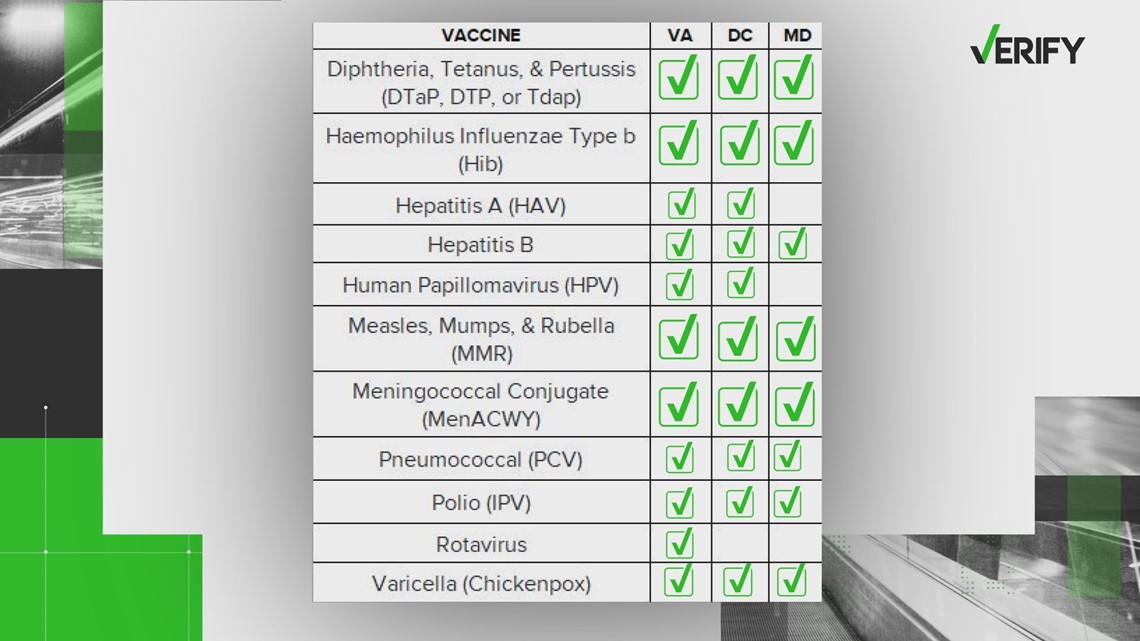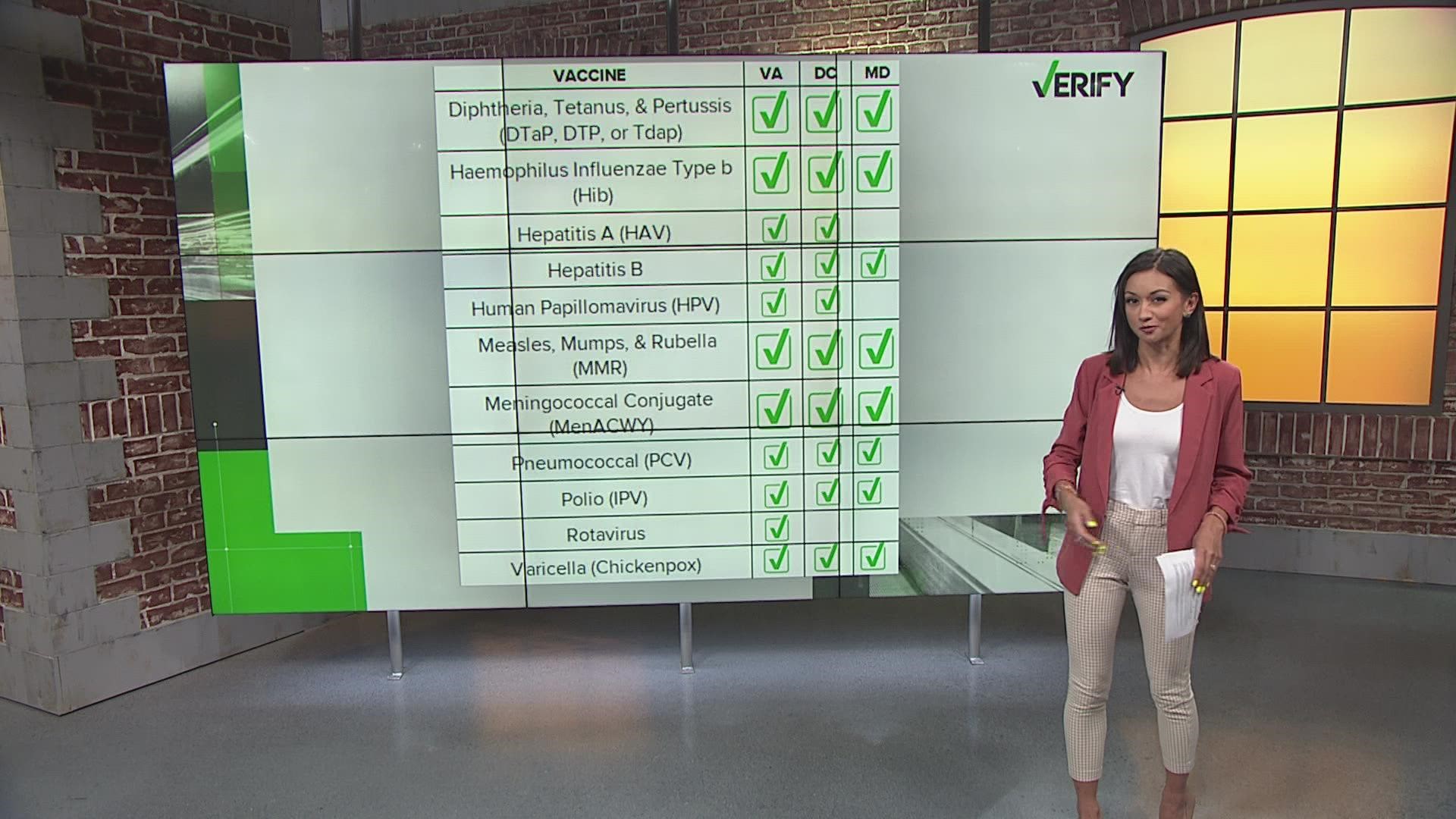WASHINGTON — It’s back to class – and back to the doctor’s office – for many families to stay up-to-date on vaccines.
THE QUESTION:
What vaccines are currently required for kids in school?
THE SOURCES:
- CDC’s pediatric vaccine schedule
- Maryland school vaccine requirements
- Washington, D.C. school vaccine requirements
- Virginia school vaccine requirements
- Dr. Julie Morita, pediatrician and executive vice president of the Robert Wood Johnson Foundation
WHAT WE FOUND:
We’ve been talking about COVID for the past few years. Now, with concerns over polio and even smallpox shots entering the conversation, it’s important to remember which vaccines are required in different schools.
We looked at the CDC’s pediatric vaccine schedule, and since states set their own school vaccine requirements in the U.S., we looked into the rules for Maryland, D.C., and Virginia.


For more information on timing of the vaccine by state, visit their websites:
Required vaccines include those aimed at preventing diseases like measles, chickenpox and polio, which are uncommon in classrooms these days–and Dr. Julie Morita, pediatrician and executive vice president of the Robert Wood Johnson Foundation, says that’s sort of the point.
“People may think, 'Oh, I can wait, or it's not that important,'” she said. “Our successful vaccine programs have really led us to a place where we really don't see these diseases that often.”
We’ve been talking about the smallpox vaccine a lot lately, since it’s the same vaccine used against monkeypox. But it’s not on the list because that shot hasn’t been routinely administered for about 50 years, since smallpox is considered eradicated in the US.
“There are these incredible benefits of our strong immune systems when we're young to vaccinate at that point in time, and then you don't have to worry about when people get busy or when they're working when they're not able to access vaccines, then they can actually get protected at a young age,” said Dr. Morita.
D.C. is one of the only localities to require it for eligible students this school year, even as other mitigation strategies like masking and social distancing are widely scrapped.
COVID appears to have had an impact on other disease prevention, too: Compared to pre-pandemic data entering the 2019-2020 school year, CDC data shows vaccine uptake for routine childhood shots has slightly declined, by about 1%.
“Because people weren't having to go back to school, the routines were disrupted, people couldn't get into their doctor offices just for the routine visits. And so things got out of sync.”
Like scores on a test, Doctor Morita says the higher the percentage, the better for everyone.
“When we have high vaccine coverage levels, what we do is we really prevent the spread within schools so children can stay in school and we know that's where they learn best,” she said.

